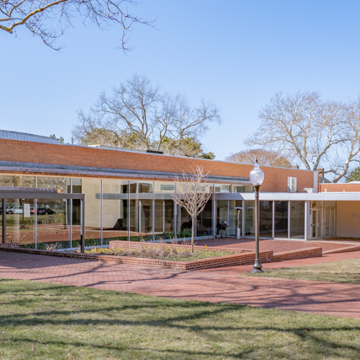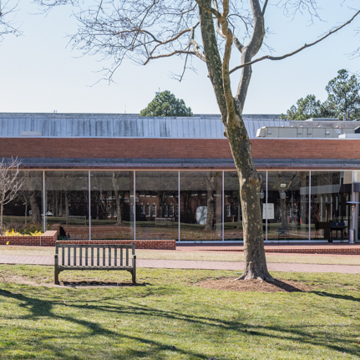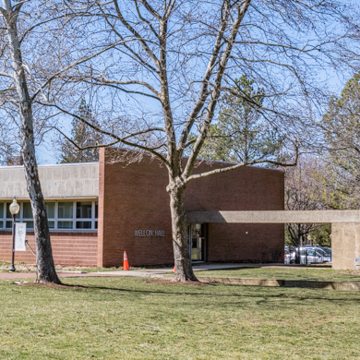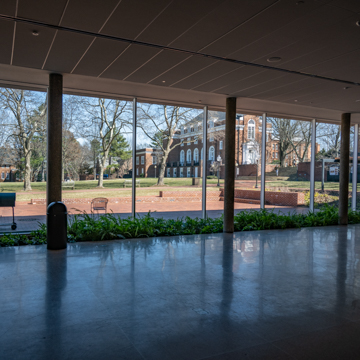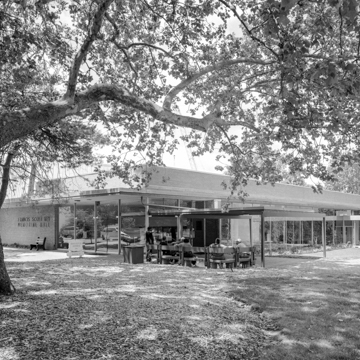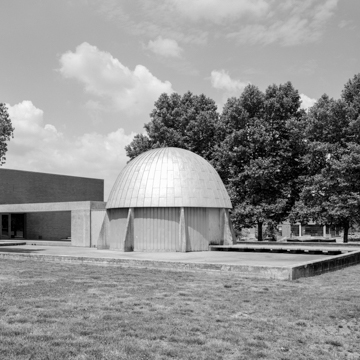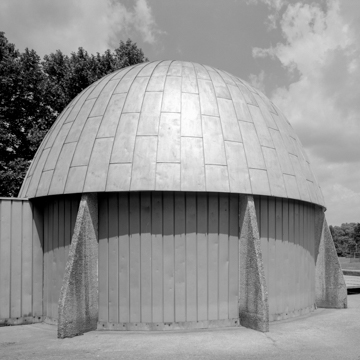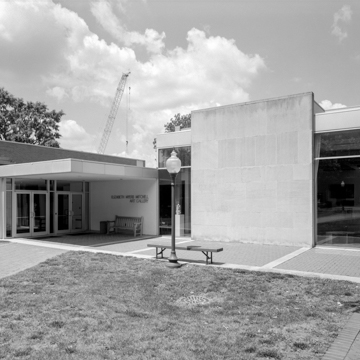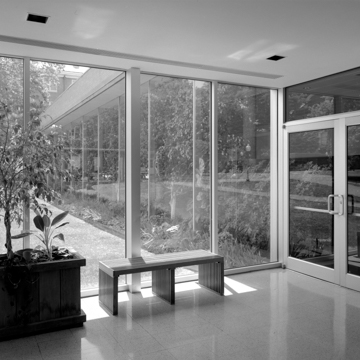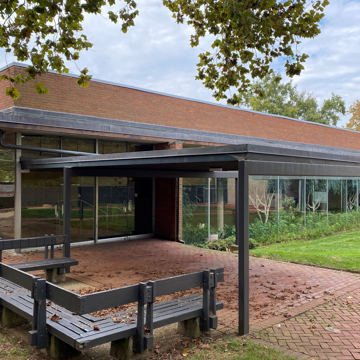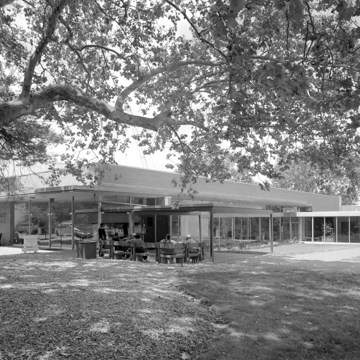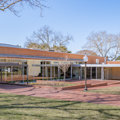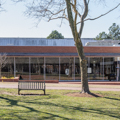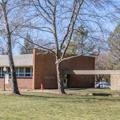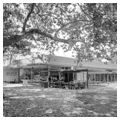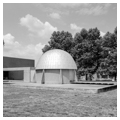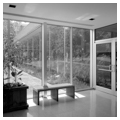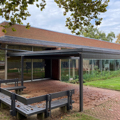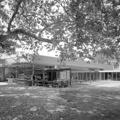Dedicated on May 22, 1959, with a speech by President Dwight D. Eisenhower, Key Auditorium and Mellon Hall is an interconnected auditorium/classroom/planetarium building designed by renowned modernist architect Richard Neutra with partner Robert E. Alexander. The low-slung, flat-roofed building was a case study in Neutra’s unornamented and modular architectural vocabulary. Asymmetrical massing, glass walls, large areas of unadorned brick and limestone, and exposed concrete columns all signaled the firm’s modern approach. St. John’s newest building represented a drastic but sympathetically scaled departure from the red brick Georgian (and Georgian Revival) buildings on campus and in the adjacent Annapolis Historic District.
In commissioning Neutra for a new multifunctional educational building, St. John’s sponsored one of his best institutional designs and a rare East Coast commission for the Los Angeles-based architect. The complex included Key Memorial Auditorium, a six-hundred-seat performance space with a glass-walled lobby entrance. The auditorium was located at one end of Mellon Hall, an L-shaped structure with a double-loaded corridor floor plan. The two wings of Mellon Hall housed the music and science departments with spaces for classrooms, studios, and laboratories. McKeldin Planetarium, a small aluminum-sheathed domed structure with exposed aggregate concrete buttresses, is located at the other end. It is set in a shallow concrete pool (now drained), another characteristic Neutra design feature.
The roughly U-shaped footprint of the original ensemble created a sheltered courtyard facing the grassy campus quadrangle that was closed off by the addition of an administrative wing and art gallery in 1989. In spite of this alteration, Key Auditorium and Mellon Hall remain an unusual and well-preserved example of Neutra’s brand of modernism in Maryland.
References
Hines, Thomas S. Richard Neutra and the Search for Modern Architecture. New York: Oxford University Press, 1982.
Triechmann, Laura, and Kim Williams. “Francis Scott Key Memorial Hall and Mellon Hall, St. John's College,” Anne Arundel County, Maryland. Maryland Inventory of Historic Properties Form, 2000. Maryland Historical Trust, Crownsville, MD.















